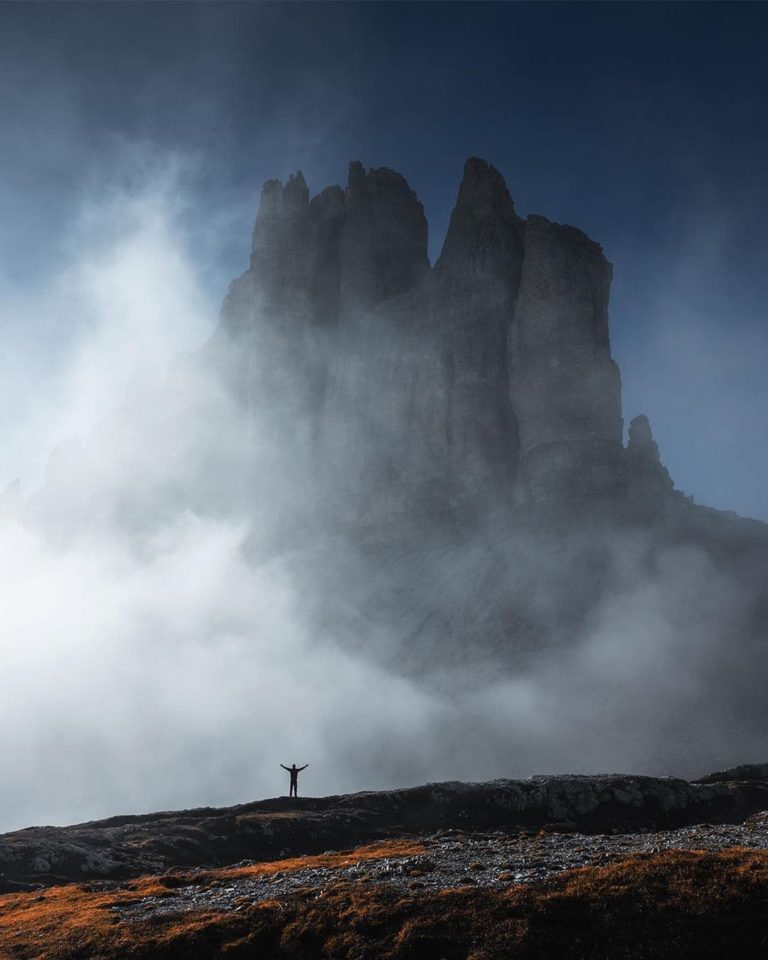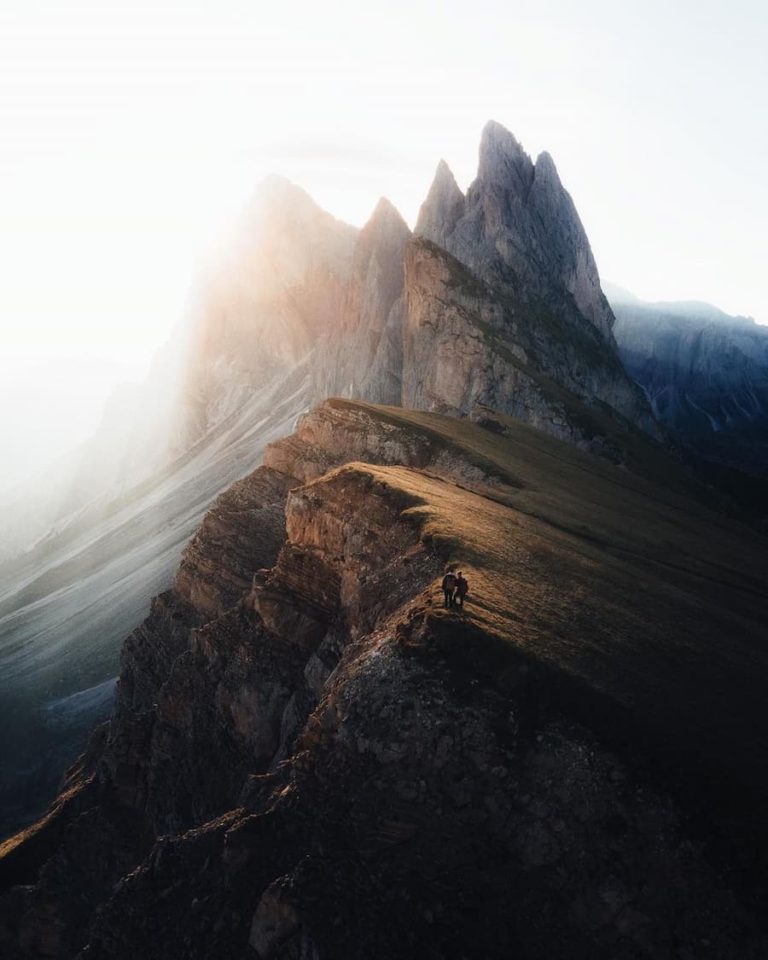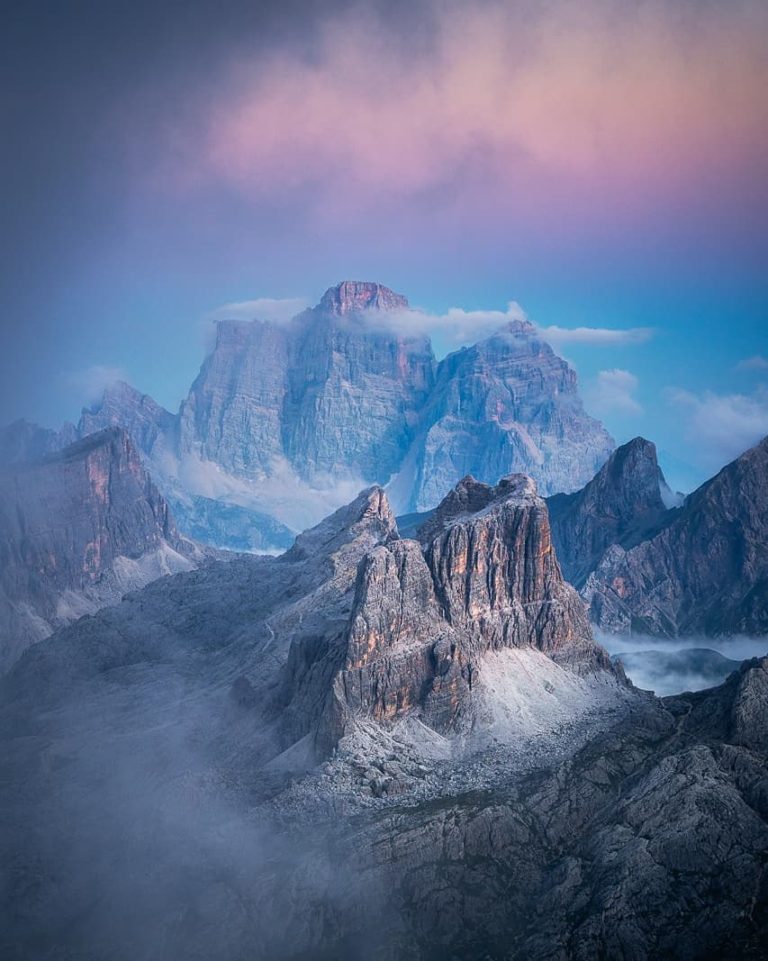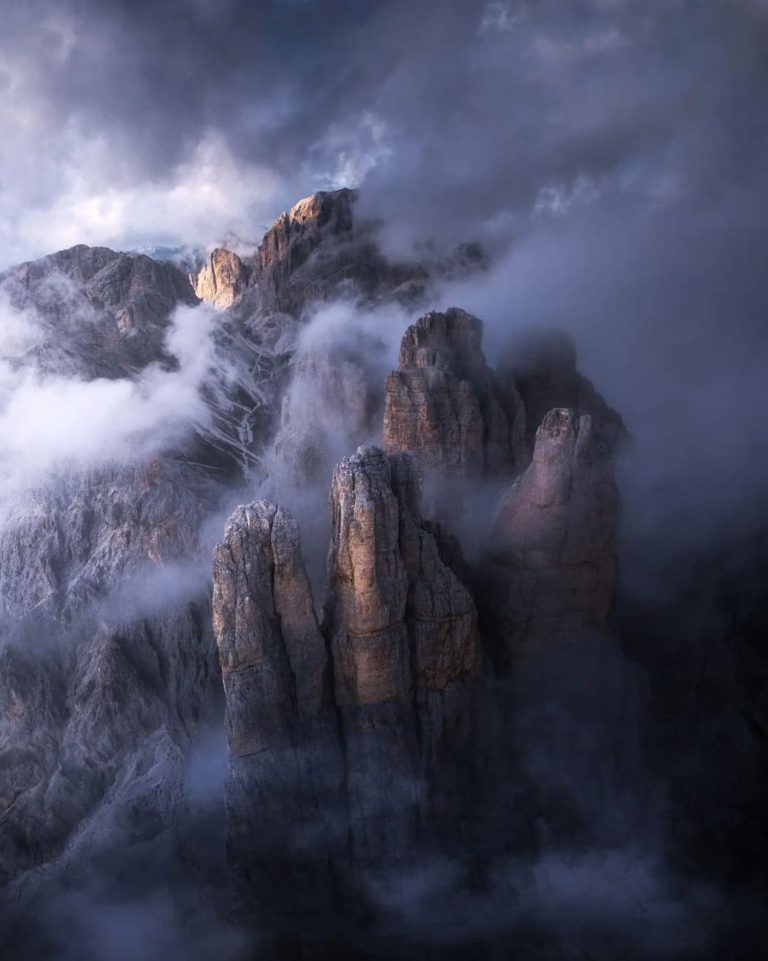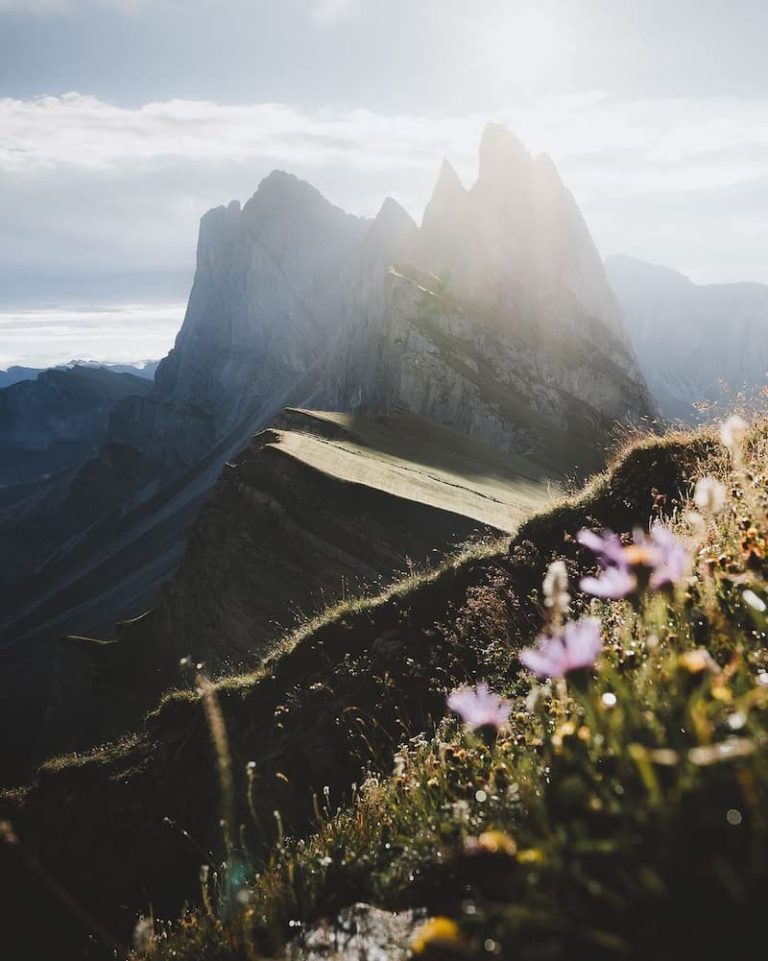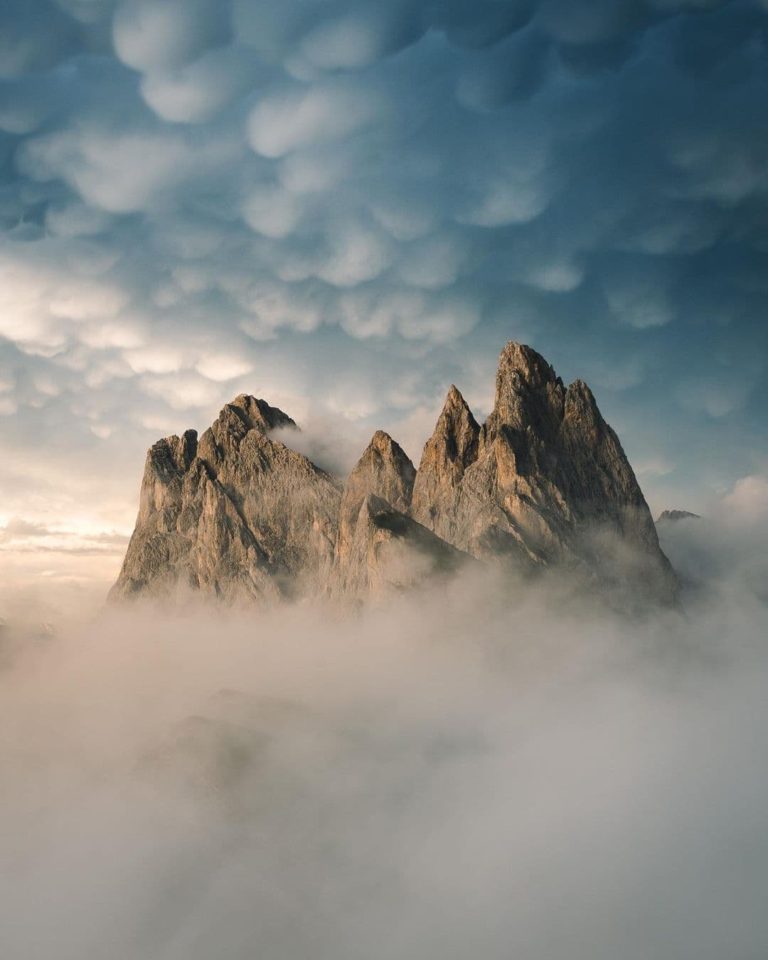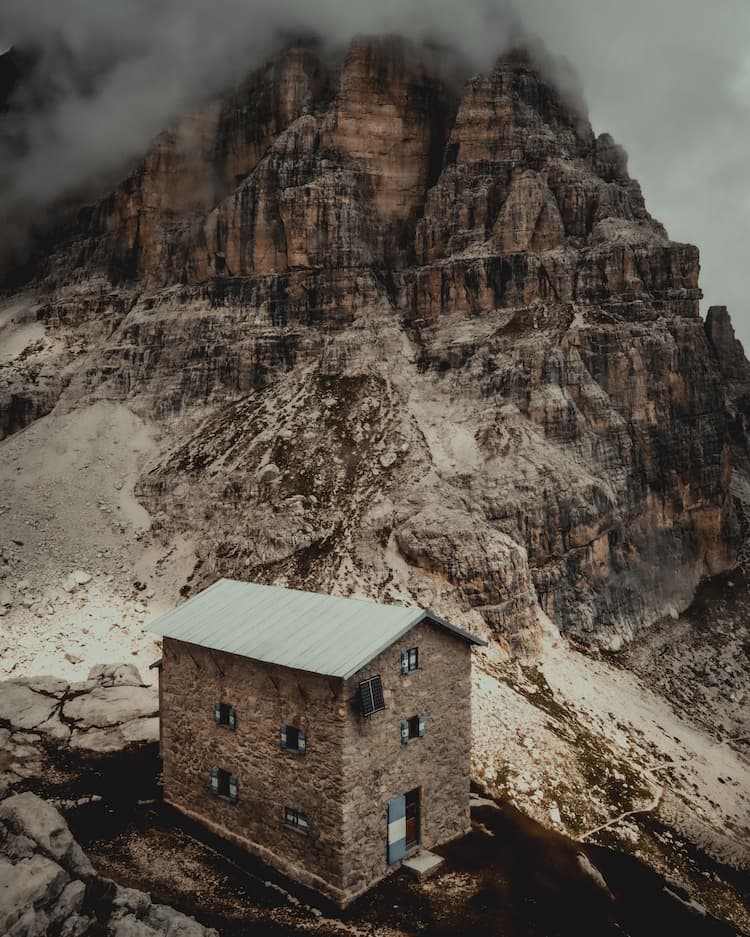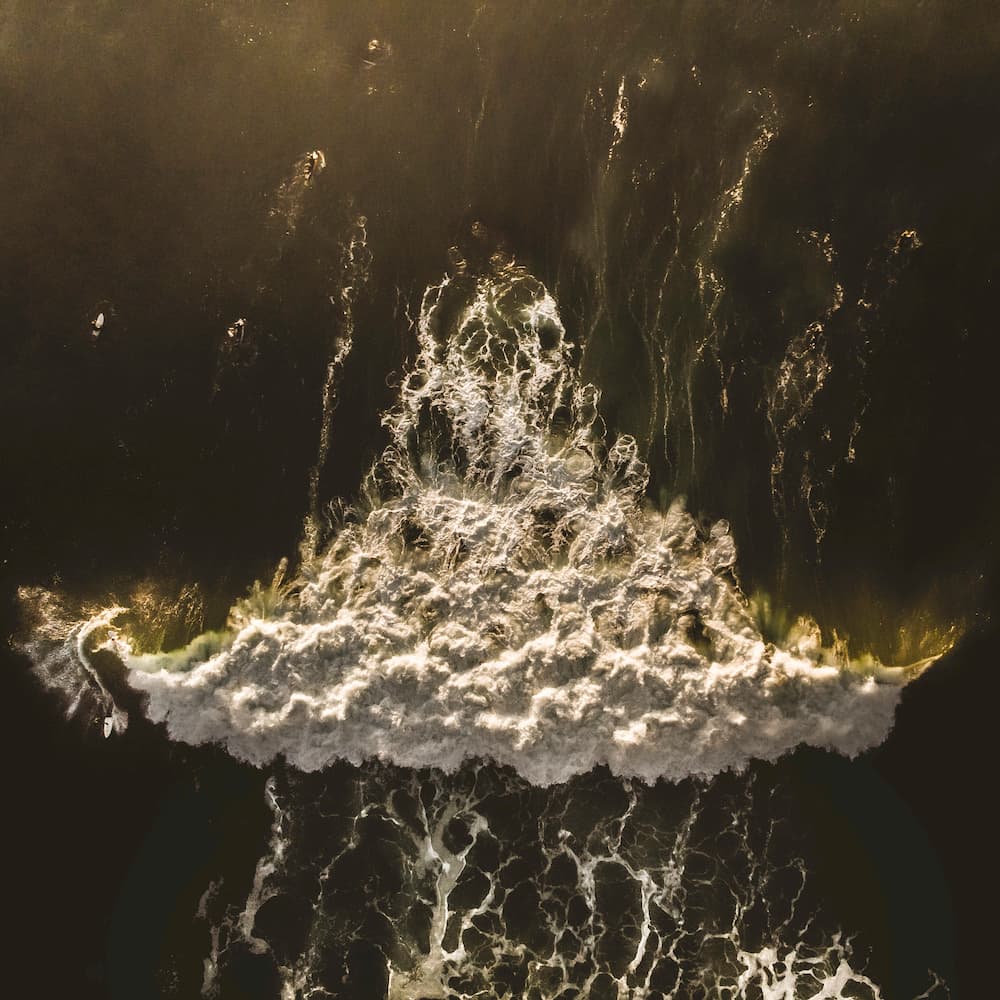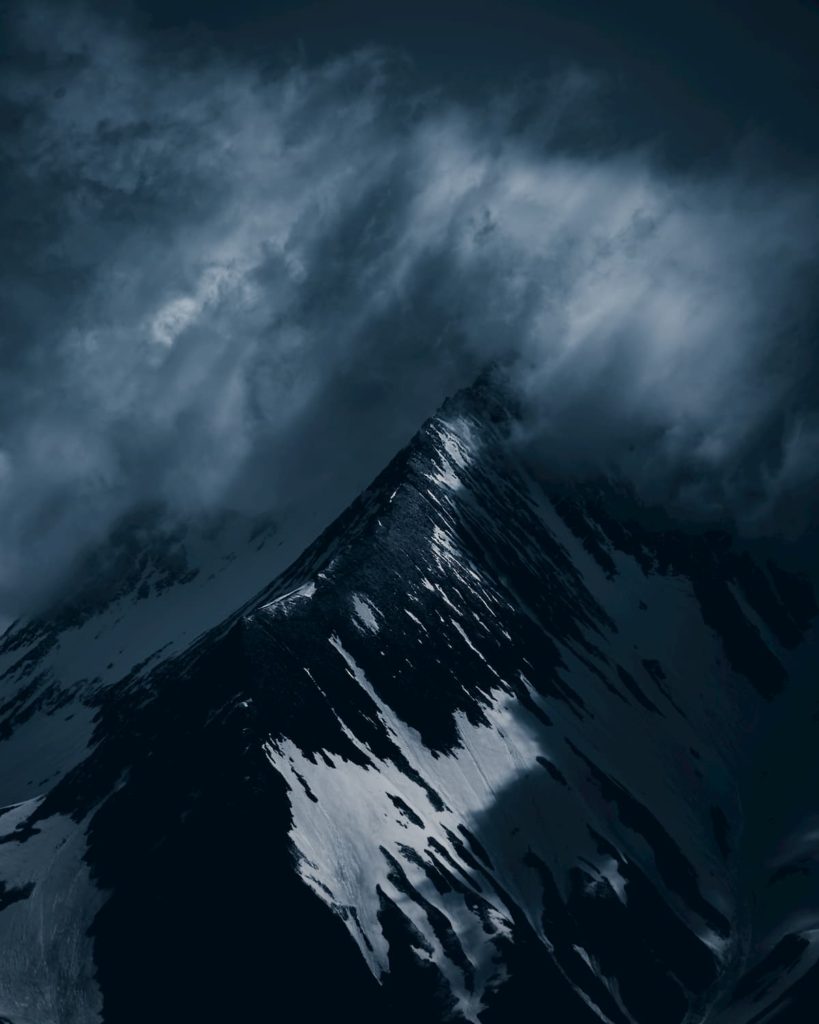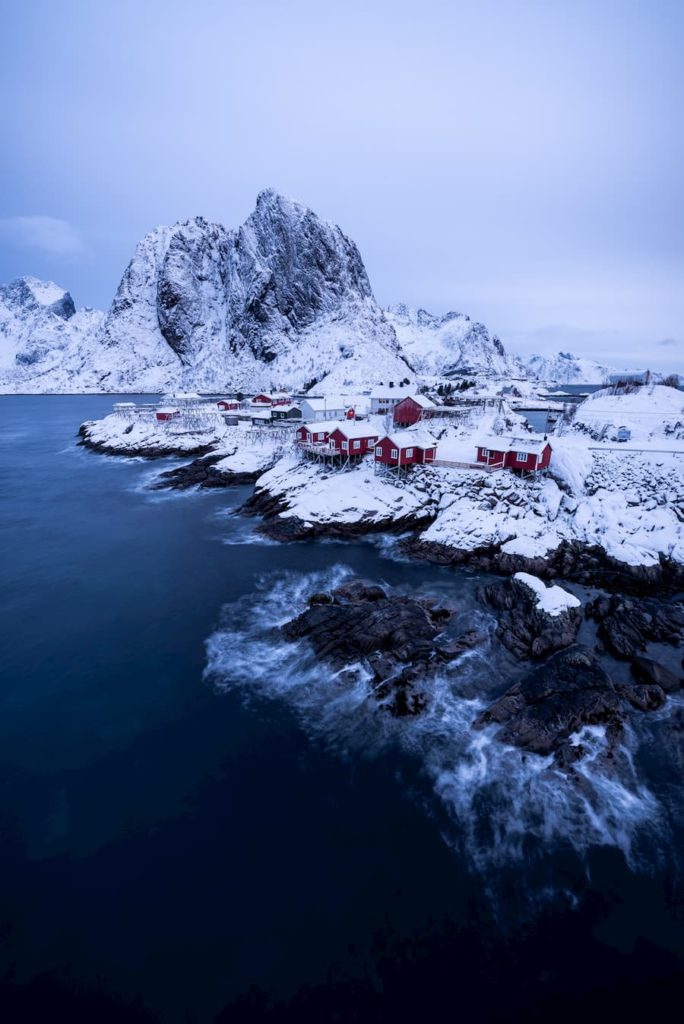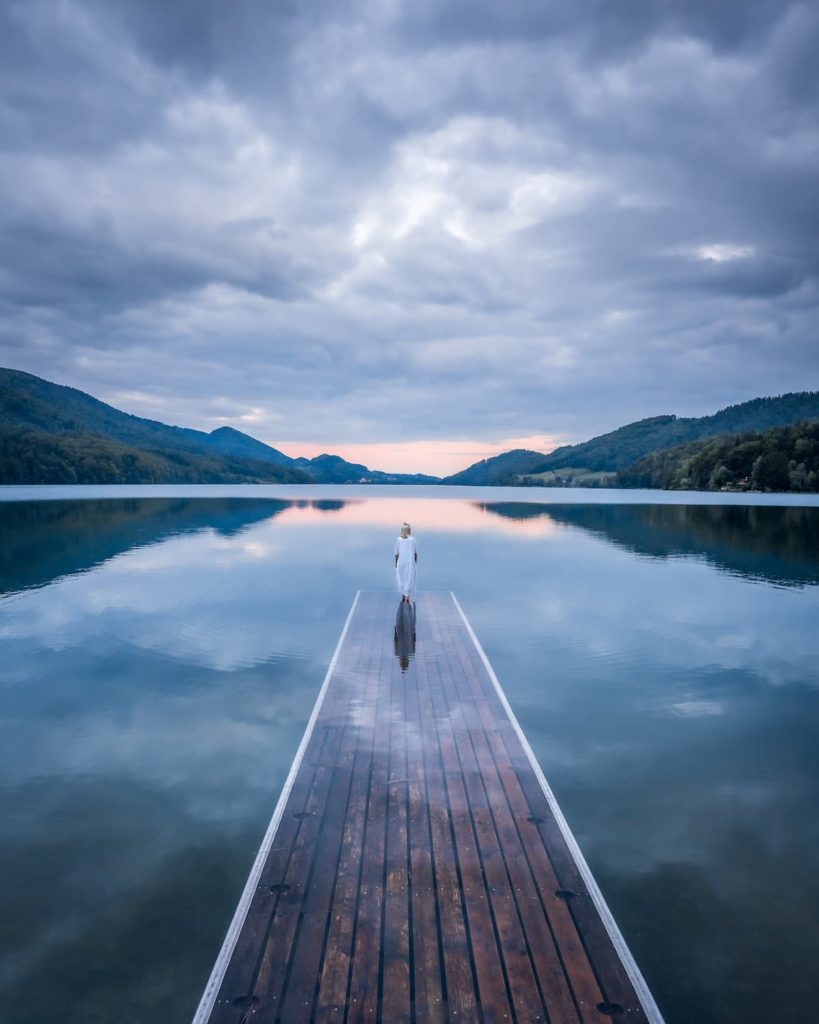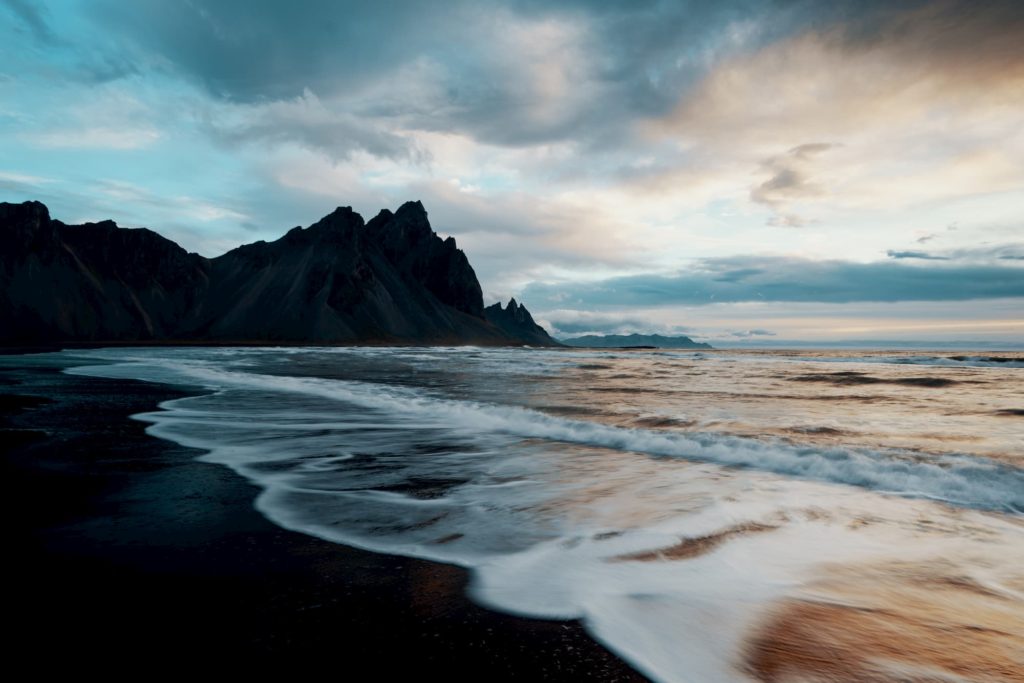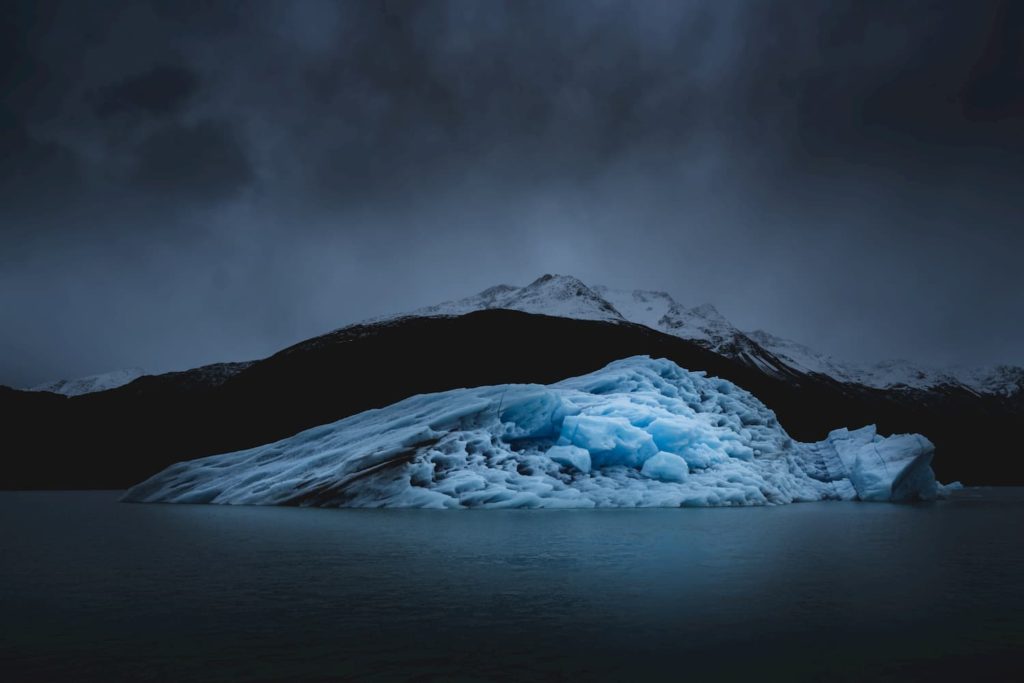
EIGHT STRATEGIES, CAREFULLY SELECTED TO TAKE YOUR MOUNTAIN PHOTOGRAPHY TO THE NEXT LEVEL!
@marcograssiphotography: “The Dolomites feel like a second home. I have spent months there in every season and still cannot decide when I like it more. The impressive peaks, turquoise lakes, and beautiful hikes make it the perfect destination. To capture the beauty of this region, or any mountainous landscape, the following strategies are helpful.”
1) Create harmony in the scene from foreground to background to make it more tridimensional so that the viewers feel like they are standing there:
@marcograssiphotography: “To achieve this goal, work globally on colors and contrast in LR, specifically on the camera calibration menu, the panel, the HSL/color menu, and the color grading menu.
These are general adjustments and aim to give a direction/starting point to what the image will be at the end.
Then start with some local color adjustments by using the HSL color sliders and adding linear and radial gradients to enhance shadows and the direction of the light.
Then move to Photoshop and keep working locally on colors to get the desired look. The HSL color slider in LR is good, but it’s just a starting point. In PS, I feel I have more control over colors and can consistently achieve a better result. To add even more depth to the image, do some dodge and burn.”
2) Provide scale, show geometry, and use the different mountain layers:
@stephanthm: “In my case, I aimed to capture the mountain peaks from a different point of view; with the two people in the foreground, I also wanted to show the proportions and convey something adventurous to the viewer.”
@nicolas.boulandet.photo: “With my photo, I wanted to capture the landscape’s excellent geometry and the perfect stacking of the mountain layers. The atmosphere at that moment inspired me enormously, especially the variations in the clouds’ density and shapes, which seemed to envelop the mountains. The sheets of clouds posed many difficulties, so when the central peak was visible, I pressed the shutter. The gradient of pastel tones in the sky associated with the soft clouds inspired me to counterbalance the mountains’ strong textures to find the right balance.”
3) Control the light and shadows to enhance the mood and maximize the impact of the main subject:
@kelvin_yuen_: “For the less important part of the photo, I adjust the darkness to guide the eye of the viewer. In my photograph, the viewer is directed to the center since it is the most epic part. Then I edit the different parts of the photo according to their needs – In the Dolomites shot, the foreground, the sky, and the peaks all get some attention and are edited separately.
For the mood, I love to use cold tonality. The overall outcome should display a mysterious, epic, powerful and unbelievable scenery.”
4) Stay close to your spot of choice and do not forget your campsite:
@jonashausmann_: “Last summer, I went on another road trip through the Italian Dolomites. Since I traveled alone, slept in my car, and was almost exclusively in nature, I could enter a state of mindfulness and connect with nature.”
@stephanthm: “In our case, we had booked accommodation near the summit and spent a lovely evening/night in the Fermeda hut in the Dolomites. At 3 am, the alarm clock rang, and we hiked the last few meters to the summit.
I was intimidated that morning by the many photographs with tripods, graduated filters, and other tools (I had none of them with me). Nevertheless, I did my thing and took photos. I ran like a wild meerkat from place to place to find compositions while everyone else clamped firmly to their tripod and continuously took a picture from the same position. After the sun had risen, I sent my former drone just a little up in the air, which resulted in a beautiful shot.”
5) Move around, and look at each element surrounding you. The ideal composition can be just a few steps from you:
@sebastian.lehrke: “Photographing in the direction of the light down into the valley, we completely forgot to turn around. It was more or less a coincidence when I walked a bit in front to place myself as a scaling point for the others at the end of a slope that I got to see this other view when I turned around to go back.
I saw something I had never seen before: unbelievably shaped clouds, like huge drops of water, being held up by the sky, threatening to fall down but magically being held. It honestly felt like being in a twilight zone. Instantly I grabbed my camera, shouted at the boys, and pointed wildly to the sky. All were stunned.”
@ilynx_: “Look at each element that surrounds you, see in advance where, why, and how the clouds will move, and above all, retain energy throughout the climb to avoid a fall.
I search for these moments immersed in nature every weekend: one day of mountain biking, one day of mountaineering, one day of climbing, one day of ice climbing, one day a long hike in the mountains – always having my camera or my drone with me.”
6) Try different settings and focal lengths to adjust to the brightness:
@ilynx_: “Play with contrasts and adapt to the brightness of the landscape. Improve your flexibility and speed, decide quickly and select the right lens and the appropriate settings. After two minutes, the weather may change the landscape, so you do not want to regret not having chosen a different lens, filter, or shot.”
7) Mountain weather is dynamic, so being patient is crucial:
@nicolas.boulandet.photo: “I was born in the Alps and grew up in the heart of the most beautiful French massifs. My parents have always been keen mountaineers, so I was introduced to mountains and nature early on. Through countless hikes, climbing trips, and mountain bivouacs, I have formed a deep connection with nature, the mountains, and the wild.
I spend whole afternoons surrounded by nature, thinking peacefully to myself. Then, when I see an opportunity, I take it. In this photo, for instance, an enormous mass of clouds rose over the ridge to obstruct my view entirely before the sunset. As I was in the heart of the thick fog, I began to despair at not being able to see the landscape again. Then slowly, the clouds dissipated, allowing me to capture some sunset images above the mountains.”
8) Reflect on your work and keep a healthy level of confidence:
@jonashausmann_: “My style and way of translating stories from businesses or people to visuals come from my education in Communication Design, partly from who I am, and partly from my experiences. You will find your uniqueness and strengths if you be yourself, reflect on your work, listen to what others tell you, evaluate, and if you are not afraid to say you are good at something. A healthy level of confidence is a big part of doing a good job and building a brand for yourself.”
Would you like content like this sent to your inbox?
NOMADICT
ART GALLERY
THE LATEST STORIES
WRITEN WITH PASSION TO INSPIRE YOU
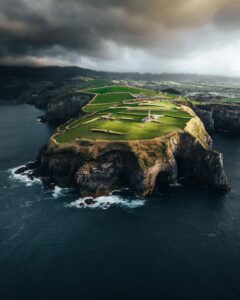
Photo tour in Azores, Portugal
Join us in the Azores for a unique photo tour, where you’ll elevate your creative skills with expert guidance from Ronald Soethje, Bruno Ázera, and Nomadict.
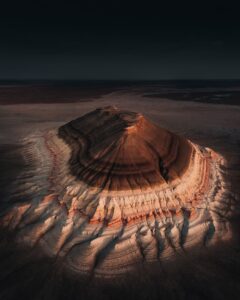
Forest Kai (@forest1kai): Photographer based in the US
In this article, Forest shares how years of chasing scale, silence, and raw landscapes shaped his approach to photography, from the deserts of Kazakhstan to the volcanic ridges of Iceland. He talks about how he uses light, texture, and vast negative space to create images that feel both intimate and overwhelming.
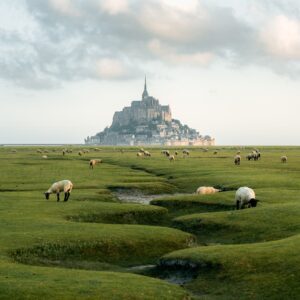
Simon Hechtbauer (@roamwithsimon): Best of the Week 32 at #nomadict
Simon shares the journey behind his photography, from early inspirations to field techniques, editing, and the story of the winning shot that shaped his path.

Miroslav Maršík (@miromarsik): Photographer based in Czech Republic
In this article, Miro shares how his love for cinematic music evolved into a deep passion for photography and how he uses light, color, and atmosphere to turn the streets of Prague into living film scenes.

Aurora photography panorama workflow: A guide to camera settings, editing, and color
In this article, Stefanie reveals how her background in physics sparked her passion for astrophotography and how she blends science with creativity to capture the beauty of the night sky. Readers will discover her approach to color, contrast, and editing, as well as her aurora photography workflow.

Yhabril (@yhabril): Best of the Week 33 at #nomadict
Spanish photographer Yhabril captures the profound connection between humans and the mountains that shaped him. Growing up in the Pyrenees, his work bridges outdoor sports, landscapes, and celestial scenes — often blending athletes, moonlight, and wilderness into striking visual stories.

Ariane Totzke (@besondersschwierig): Photographer based in Switzerland
In this article, Ariane shares how photography helped her navigate personal challenges, connect authentically with people and animals, and develop a philosophy rooted in empathy and artistic freedom. Readers will also discover her ethical approach to wildlife photography and her trusted equipment for both camouflage techniques and cameras.

How to photograph Dutch tulip fields: A guide to light, gear, composition, and colors
Discover how to photograph Dutch tulip fields in their most magical light. From choosing the right gear and lenses to mastering composition, color, and aerial perspectives, this guide shares creative techniques to capture the beauty of the Netherlands’ tulips. Learn how light, color grading, and proportion bring emotion into every frame.
